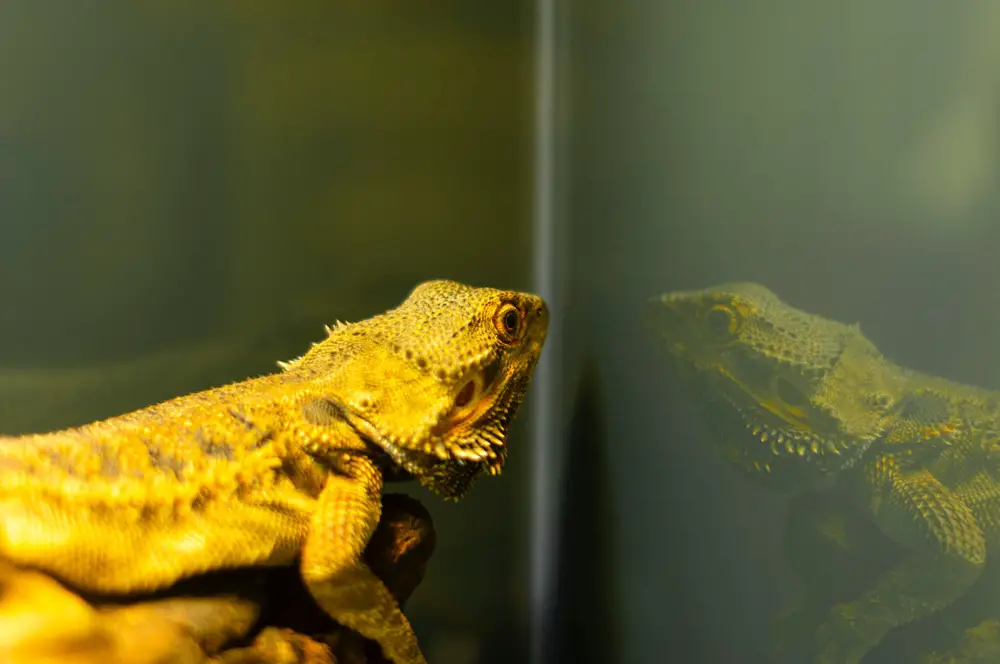Why are bearded dragons fighting to death?
According to Reptile Magazine, bearded dragons (or beardies for short) are the most popular reptile pets in the US.
But how well does it get along with other animals? Will bearded dragons fight to death with them?
And if your bearded dragons are fighting with other reptiles, especially other bearded dragons, is that normal?
If you plan to have a bearded dragon living with other animals, here are some things you should know.
Related Posts:
- Bearded Dragon Throwing Up Clear Liquid: What Should You Do?
- What Are Bearded Dragons Predators? Defensive Techniques
- Bearded Dragon Sleeping in Water Dish: What You Should Know
- Do Bearded Dragons Sleep Standing Up? Sleeping Habits
Why Are Your Bearded Dragons Fighting to Death?
Why are your bearded dragons fighting to death?
Bearded dragons are generally nice reptiles and like to interact with people.
But in the wild, they are solitary creatures. Bearded dragons prefer to be alone, even in captivity.
Because of this, housing a beardie dragon with other pets may be tricky, especially when that pet is another bearded dragon.
What Will Happen If Two Bearded Dragons Cohabit?
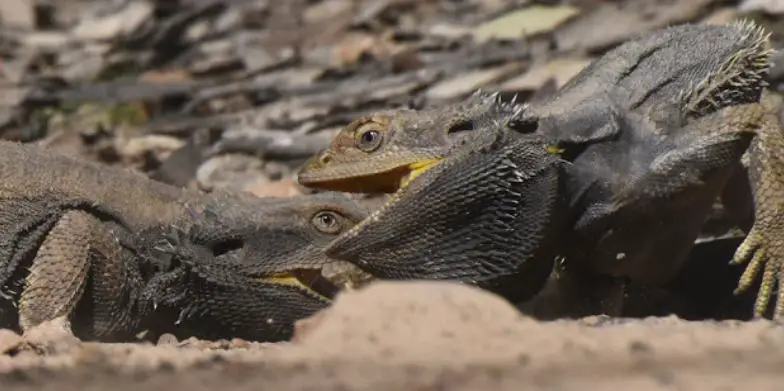
1. Male and Male Cohabitation
When you put two beardies in the same tank, a bearded dragon fight is sure to happen. One of the males could become dominant and control the food and basking space.
This can reduce the submissive beardie’s lifespan due to limited access to vital resources.
Will two male bearded dragons fight to death? In the wild, absolutely.
If two domesticated bearded dragons fight, even if none of them dies, there is still a high chance of injuries.
2. Female and Female Cohabitation
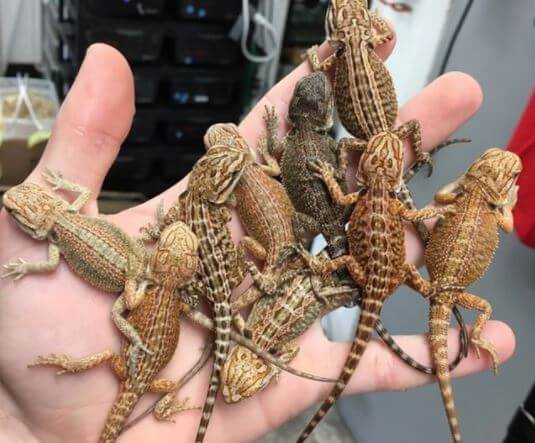
Female and female pairings won’t have dominance issues, but they can still fight for food and create a hostile living environment.
If possible, you should house two female bearded dragons separately to avoid unnecessary conflicts.
3. Male and Female Cohabitation
If you keep a male and a female bearded dragon in the same tank, the male will try to mate with the female all the time.
Breeders, beware: Laying too many eggs is listed among other female bearded dragon death causes.
Therefore, keep male and female bearded dragons together only if you want to breed them, and only for a short time when doing so.
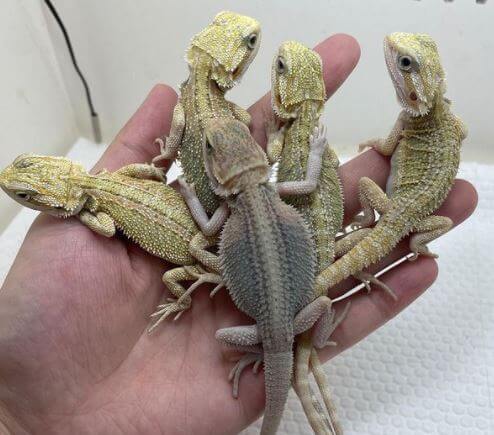
Why Are My Male and Female Bearded Dragons Fighting?
A bearded dragon’s mating ritual usually involves head bobbing, arm-waving, nipping, and biting.
When seeing these odd behaviors, a question commonly asked by first-time breeders is, “Is my bearded dragon mating or fighting?”
If things get too tense, get the male away from the female.
Also, to avoid aggressive mating behavior, put 2 to 3 females in the same tank with one male when breeding.
Will Baby Bearded Dragons Fight to Death?
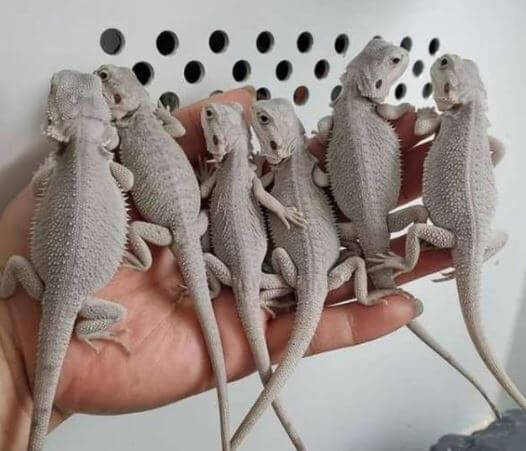
A newborn dragon doesn’t need any maternal care, which shows how early these little guys get independent.
Baby bearded dragons start fighting each other very quickly, too, so breeders will often separate them at 2 to 4 weeks old.
Can Baby Bearded Dragons Stay With Their Mom?
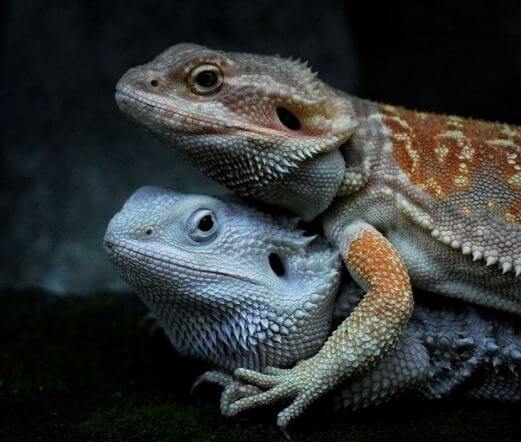
After laying her clutch, a female bearded dragon will just bury her eggs and then leave.
As a result, she won’t be able to recognize her babies and might prey on them because of their size.
Therefore, baby bearded dragons cannot and should not stay with their mothers after hatching.
After they are laid, owners should move the fertilized eggs to an incubator.
Will a Bearded Dragon Fight Other Household Pets?
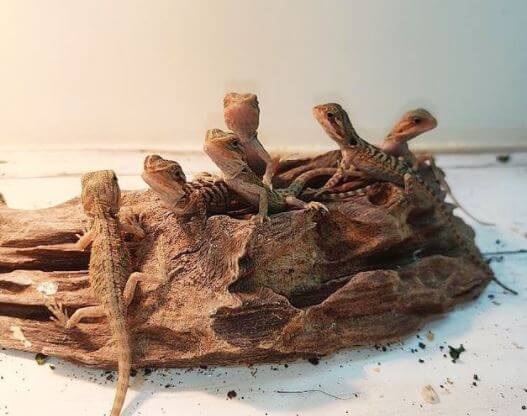
1. Bearded Dragons With Cats and Dogs
Even though male bearded dragons often fight one another, a bearded dragon fighting cats and dogs is something much less commonly seen.
Beardies can be quite calm and have shown signs of affection toward both humans and other pets.
Even so, make sure to introduce your pets to each other slowly before leaving them together unsupervised.
2. Bearded Dragons With Fish
In the wild, bearded dragons sometimes eat smaller fish.
If you like to let your bearded dragon roam the house, it’s best to keep all fish tanks out of the dragon’s reach.
However, this shouldn’t be a problem with big fish, and most fish tanks are too tall for a beardie to climb.
If you need to place two enclosures side by side, put a simple poster or a piece of colored paper between the enclosures to keep them from seeing each other.
Overall, a bearded dragon fighting fish shouldn’t be too much of a concern.
3. Bearded Dragons With Other Reptiles
Lizards and other reptiles that come from similar climates can live with a bearded dragon if there is enough space.
If you plan to pair a dragon with another lizard, they should be similar in size. If not, the bigger one will prey on the smaller one.
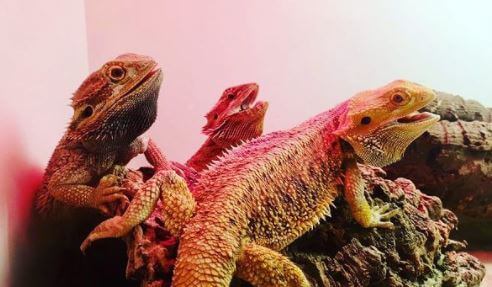
Turtles make great housemates for bearded dragons because they are herbivores and won’t prey on other animals.
Also, their tough shells should keep them safe from any bearded dragon’s attack.
Zoos often keep these dragons with shingle-back lizards, blue tongue skinks, leopard tortoises, and spurred tortoises.
Some suggest nocturnal lizards as possible roommates for beardies, like the smooth knob-tailed geckos and Diplodactylus species.
The reason behind this is that bearded dragons are active during the day and the nocturnal lizards are active at night.
With the two being up at different hours, you won’t have to worry about them interacting too much.
How to Introduce a New Reptile to a Bearded Dragon?
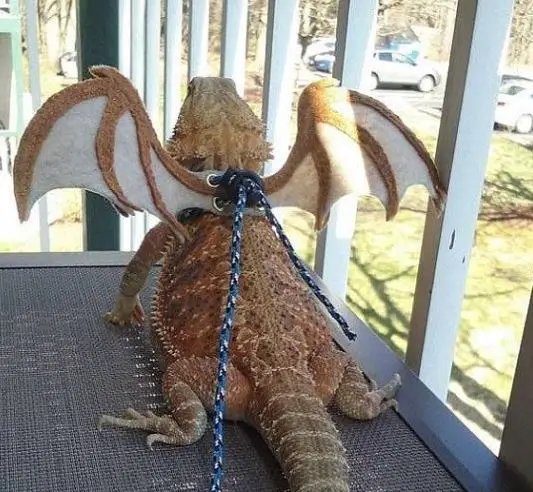
After preparing the right setups and a big enough space, you should still take some precautionary steps before housing your bearded dragon with another reptile:
- Make sure that their heat and humidity needs are the same.
- Have a vet check your new reptile for parasites and other illnesses.
- Even with vet checks, some illnesses take a while to show up. Therefore, keep your new reptile in its own tank for at least a month.
- Introduce them to each other outside of their enclosures to see how they interact.
- Occasionally put the two reptiles together for short periods of time. After that, slowly increase the length and frequency of these interactions until they are comfortable spending a long time together.
Here’s a video introducing a bearded dragon to other pets:
Which Animals Should NOT Live With a Bearded Dragon?
When talking about which animals can and cannot live with a bearded dragon, it’s important to mention the bearded dragon’s natural predators and prey.
Due to obvious reasons, avoid housing these animals with your beardie.
Who Are Bearded Dragons’ Predators?
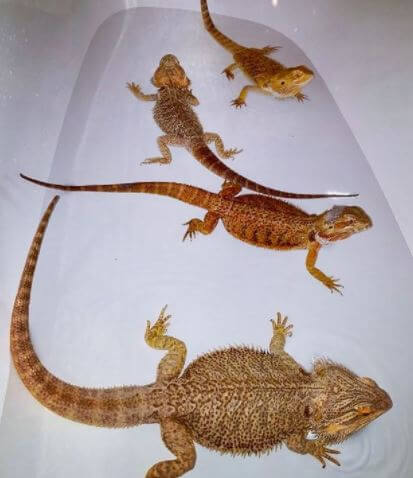
1. Goannas
Also known as monitor lizards, goannas are mostly carnivorous reptiles that come from Australia.
In some parts of Australia, pet owners with a license can buy captive-bred goannas.
If you’re lucky enough to have one as a pet, make sure to not house it with a bearded dragon.
2. Snakes
Snakes are popular pets in many countries, so it is common for some reptile enthusiasts to own both a bearded dragon and a snake.
However, snakes often hunt and eat bearded dragons, both in the wild and in captivity.
Therefore, you should never put a big snake in the same tank as a bearded dragon.
These creatures should be housed separately and carefully, making sure the beardie is out of the snake’s reach.
3. Dingoes
The dingo is a canine species in Australia. In the wild, these guys will prey on anything from mammals to birds to reptiles, including your bearded dragon.
They may be cousins to dogs, but they are not quite as friendly, even domestic ones.
Therefore, keep your bearded dragons away from dingoes.
4. Birds of Prey
Raptors, or birds of prey, are carnivorous birds that prey on small mice, fish, reptiles, and sometimes even other birds.
A well-known bird of prey pet is the hawk. Hawks are usually kept outside, so if your beardie is kept indoors, there should not be a problem.
However, some beardie owners like to take their dragons outside for a walk on a leash.
In which case, keep an eye out for hawks and other birds of prey!
Who Are Bearded Dragons’ Prey?
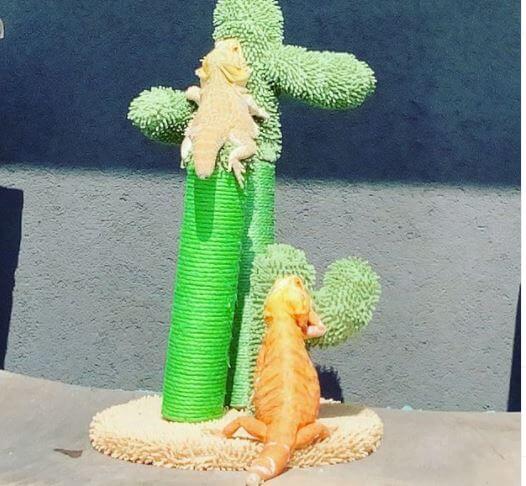
Bearded dragons are omnivorous creatures who eat mostly insects and plants.
Bearded dragons are not a threat to many, except maybe smaller mice and reptiles.
As we said in the “How to Introduce a New Reptile to a Bearded Dragon” part, size matters when looking for a bearded dragon’s roommate.
What Are Bearded Dragon Death Signs?
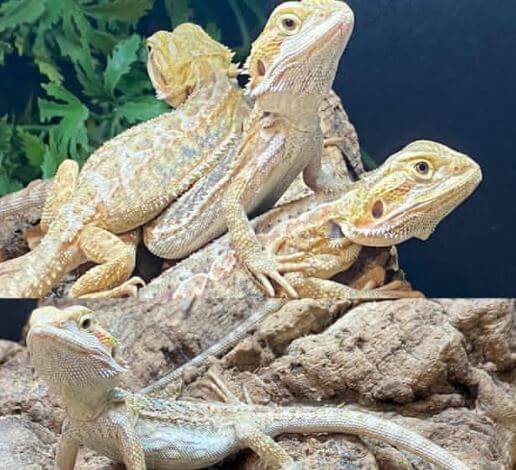
Have you ever seen two bearded dragons fight to death?
If so, can you tell the differences between a resting and a dead beardie?
In case you didn’t know, here are some signs a bearded dragon may no longer be alive.
- Not responding when you put it on its back (bearded dragons can’t breathe on their back).
- Unnaturally limp or not completely closed mouth and jaws.
- They are very limp when handled (although when rigor mortis sets in, they are stiff).
- No breathing (their breathing is very slow when brumating, so this can be hard to tell).
- Not blinking when you touch its eyelids, eyes rolled back and sunken.
- Fluids coming out of the nose and mouth.
- Black beard and underside (due to blood pooling).
- Pupils stay dilated and not reacting at all to bright light.
How to Keep a Bearded Dragon From Seeing Reflection?
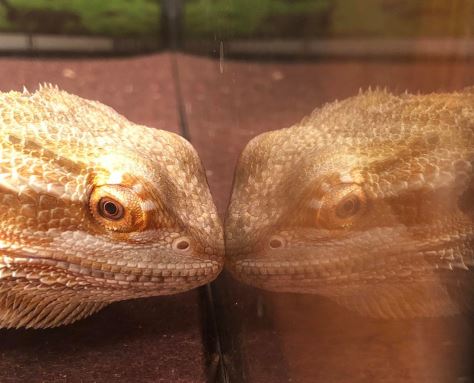
Sometimes with glass tanks, owners can see their bearded dragons attacking their reflection, mistaking it for another beardie.
While seeing a bearded dragon fighting reflection might be funny, this is actually a sign your beardie is distressed.
How to Stop Your Bearded Dragon From Seeing Reflection?
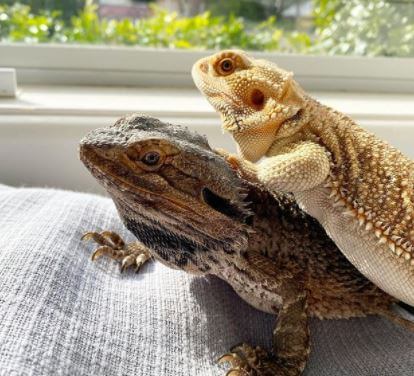
- Keep the tank in a well-lit room and make sure the beardie’s enclosure isn’t too bright. This can sometimes be difficult because bearded dragons require basking lights. In this case, keeping the lamps at the right temperatures and brightness should be prioritized.
- Place some ornaments around the edges of the tank to obstruct light from hitting the glass. Things like plants or logs will do just that while still letting you see your beardie.
- Cover 1 to 3 sides of the tank with aquarium paper. AWERT Reptile Habitat Background and Aquarium Background Fish Tank Decorations Pictures can cover the sides well!
Frequently Asked Questions About Bearded Dragons Fighting to Death
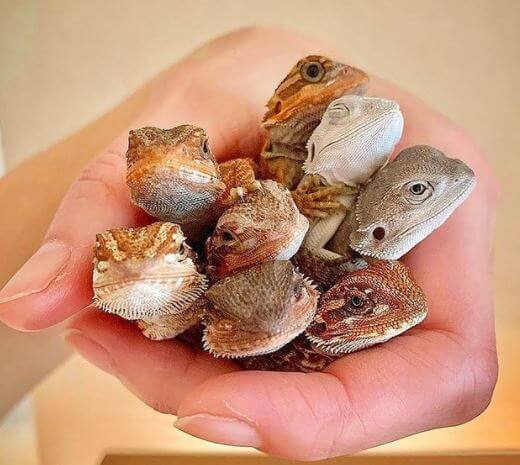
1. Are Male or Female Bearded Dragons More Aggressive?
Male bearded dragons are usually more aggressive than females, but they are more active and engage more socially (with other animals) as well.
2. How Often Does a Bearded Dragon Shed?
Growing bearded dragons shed every two to four weeks, while adult bearded dragons shed once every few months.
3. Can a Bearded Dragon Fight Snakes?
Bearded dragons can attack smaller snakes, so don’t leave them together thinking your bearded dragon will avoid its predator no matter how small.
4. Can Bearded Dragons Live With Herbivorous Birds?
Many owners have said that their bearded dragon gets along just fine with cockatiels and parrots.
While others have claimed that their bearded dragon would freak out if they see a bird of any kind.
Therefore, the answer to this question is, it depends on the bearded dragon.
Conclusion
Why are your bearded dragons fighting to death?
This can be avoided if you know which animals can and cannot live with a bearded dragon.
With the right care, your bearded dragon will bring your family a lot of love and joy, while also getting along with other animals in the household.
Key points about bearded dragons fighting to the death:
Bearded dragons are typically known for their calm and sociable nature, but aggression can still occur, especially when territorial disputes arise. While it’s rare for bearded dragons to fight to the death, territorial aggression can lead to injuries if not managed properly. Here are some key points to understand about aggression and territorial behavior in bearded dragons:
1. Territorial Nature:
- Bearded dragons can be territorial, especially when they feel their space is being invaded.
- Males, in particular, may become more territorial during the breeding season.
2. Display of Dominance:
- Dominance displays between bearded dragons are common and typically involve head bobbing, arm-waving, and throat puffing.
- These displays are part of establishing hierarchy within a group.
3. Aggressive Behavior:
- Aggression can escalate beyond dominance displays, leading to biting, scratching, and even physical combat.
- Aggressive encounters can result in injuries if not separated.
4. Mating Aggression:
- During the breeding season, male bearded dragons may become more aggressive as they compete for the attention of females.
- This aggression can result in physical combat if two males are placed together.
5. Female Aggression:
- Female bearded dragons can also display territorial or aggressive behavior, especially if multiple females are housed together.
6. Avoidance and Interventions:
- In captivity, it’s essential to monitor bearded dragons for signs of aggression.
- If aggression occurs, it’s advisable to separate the individuals involved to prevent injuries.
7. Injury Risk:
- Bearded dragons have sharp teeth and claws, which can cause injuries during fights.
- Injuries can range from scratches to deeper wounds, posing health risks.
8. Preventing Aggression:
- To prevent aggression, provide ample space and hiding spots in the enclosure to allow dragons to establish their territories.
- Avoid keeping multiple adult males together, especially during the breeding season.
9. Supervised Interaction:
- If you wish to introduce bearded dragons to one another, do so under close supervision.
- Be prepared to separate them if aggression occurs.
10. Respecting Individual Needs: – Recognize that not all bearded dragons are social or tolerant of others. – Some individuals may be more solitary and prefer to live alone.
11. Stress Reduction: – Reducing stress in the enclosure, such as providing proper basking spots, temperature, and humidity, can help minimize aggression.
12. Consultation with a Veterinarian: – If you are unsure about how to manage aggression in your bearded dragons or if injuries occur, consult with a reptile veterinarian for guidance and treatment.
In summary, while bearded dragons are not typically prone to fighting to the death, they can engage in territorial and aggressive behavior, particularly during the breeding season. It’s essential to monitor their interactions and intervene if necessary to prevent injuries. Providing an appropriate habitat with adequate space and hiding spots can help reduce aggression and promote the well-being of your bearded dragons.
Further Reading:
- Carolina Custom Cages Terrarium Review
- 8 Best Basking Rocks for Beardie: What Is the Best Choice?
- 10 Best Thermometers for Beardie: How to Choose the Best One?
- 5 Best Beardie Lighting Setups for Beardie Lovers
- 9 Best Heat Lamps for Beardie: Natural Habitat Provided

